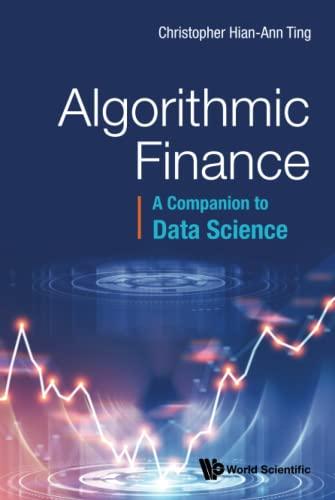Question
1) Burton, a manufacturer of snowboards, is considering replacing an existing piece of equipment with a more sophisticated machine. The following information is given. The
1) Burton, a manufacturer of snowboards, is considering replacing an existing piece of equipment with a more sophisticated machine. The following information is given.
The proposed machine will cost $120,000 and have installation costs of $15,000. It will be depreciated using a 3 year MACRS recovery schedule. It can be sold for $60,000 after three years of use (at the end of year 3).
The existing machine was purchased two years ago for $90,000 (including installation). It is being depreciated using a 3 year MACRS recovery schedule. It can be sold today for $20,000. It can be used for three more years, but after three more years it will have no market value.
The earnings before taxes and depreciation are as follows:
New machine: Year 1: 133,000, Year 2: 96,000, Year 3: 127,000
Existing machine: Year 1: 84,000, Year 2: 70,000, Year 3: 74,000
Burton pays 40 percent taxes on ordinary income and capital gains, and uses a WACC of 14%.
The maximum payback period allowed is 3 years.
They expect a large increase in sales so their Net Working Capital will increase by $20,000.
a) Calculate the initial investment required for this project.
b) Determine the incremental after-tax operating cash flows
c) Find the terminal cash flow for the project
d) Find the Payback period, NPV, IRR, and MIRR.
e) Should the new machine be purchased? Why or why not?
2) Describe the average and marginal tax rates. Explain which rate is most relevant if your income is increasing and why it is the relevant rate.
3) Burton currently has $850,000 of long-term debt outstanding, 5,000 shares of preferred stock ($10 par) with a market price of $12, and 20,000 shares of common stock ($20 par) with a market price of $53 per share. They have used a WACC of 14% in the past to evaluate projects but want to determine their current required return for new investments.
Debt: Burton can sell a 10-year, $1,000 par value, 7 percent annual coupon bond for $975. A flotation cost of 2 percent of the face (par) value would be required. Additionally, the firm has a marginal tax rate of 34 percent.
Preferred Stock: Burton pays $1 dividends annually on their preferred shares. The shares are currently selling for $12 in the secondary market. They do not have plans to issue any additional preferred stock.
Common Stock: Burton's common stock is currently selling for $53 per share. The dividend expected to be paid at the end of the coming year is $4. Its dividend payments have been growing at a constant 3% rate. It is expected that to sell all the shares, a new common stock issue must be underpriced $1 per share and the firm must pay 1% of market value per share in flotation costs.
a) Calculate the after-tax cost of debt
b) Calculate the cost of preferred equity
c) Calculate the cost of common equity
d) Calculate the WACC
e) Re-calculate the NPV for the project in #1 above using this new WACC.
f) Should Burton accept the project when considering this revised cost of capital?
Step by Step Solution
There are 3 Steps involved in it
Step: 1

Get Instant Access to Expert-Tailored Solutions
See step-by-step solutions with expert insights and AI powered tools for academic success
Step: 2

Step: 3

Ace Your Homework with AI
Get the answers you need in no time with our AI-driven, step-by-step assistance
Get Started


